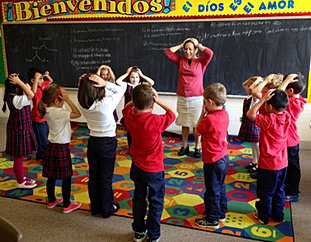How does the language acquisition take place? How to make it effective?
To develop language skill, one must get lots of input that is comprehensible, compelling, rich, close to real life and contextual, fun, and also have a good moral value. To speak and write, one needs to retain the language for long time, it should be easy to recall, easy to say it, and should be fun too. What language material provides all these? Stories, Stories, and Stories.
(மொழி கற்க)
யாமறிந்த வழிகளிலே
கதைகள் போல
இனிதாவது எங்கும் காணோம்.
Here is some references from “Talk Like TED” book.
இனிய கதைகளை கேட்கும் போதினிலே
இன்பத் தேன் வந்து பாயுது காதினிலே!
A language teaching method called TPRS (Teaching Proficiency through Reading and Storytelling) was developed and is being used widely to teach a second language.
Benefits of Stories to Preschool Age Kids (3-5)
Geethapriya Thiagarajan
Basic speech skills. in preschool, your child is learning critical language and enunciation skills. By listening to you read, your child is reinforcing the basic sounds that form language. It is very important pre-literacy activity at this age. As a preschooler, your child will likely begin sounding out words on his own.
Better communication skills. When you spend time reading to your child, they’ll be much more likely to express themselves and relate to others in a healthy way. By witnessing the interactions between the characters in the books you read, as well as the contact with you during story time, your child is gaining valuable communication skills.
Enhanced concentration and discipline. Preschoolers may initially squirm and become distracted during story time, but eventually they’ll learn to stay put for the duration of the book. Along with reading comprehension comes a stronger self-discipline, longer attention span, and better memory retention.
What books to use
Selecting the right book is important. This is a challenge in teaching Tamil to kids in the diaspora. We need to choose books that are comprehensible and compelling. Meaning the language should be easy to understand, and the story should be interesting to the age group. The learners' age group and the language skill are usually varying. Hence the challenge. Among the available story books in Tamil either they are comprehensible or interesting. We need books that are both comprehensible and compelling.
The language should be such that the kids know most of the words (about 75%) already. This is to ensure they do not find the book difficult. The remaining 25% can be new words. With the comprehension of the 75%, they will acquire the remaining 25% with ease.
A Case Study
I was looking for a story book in Spanish when I started learning Spanish few years ago. I looked for books in the library. There are lots of books available. I found only few books interesting. This is because the books that are at my language stage is not interesting to my age, and the books suitable for my age is not written for my stage. My search continued and I came across a book called "Pobre Ana". This book was written by Dr. Blaine, the developer of TPRS, for high school students. Ok I can accept that; I can wear high schooler hat :)
Started reading the book. I found the book easy to comprehend. It is a 40 pages book with about 10 chapters. There are no pictures. It would have been nice if it had pictures. But, it is okay since this is written for high school kids. I was able to read and complete the full book in one short. Of course, I had to make few visits to Google translate to understand some words and phrases. I even translated this book to Tamil.
Dr. Blaine sure knows Language acquisition.
Let me do the book review with the picture I gave above.
Input:
- comprehensible input: yes, the whole book is written in present tense, it uses lots of cognates, and simple and day to day words.
- compelling input: yes. it has some story and moral
- rich and real life/contextual: it is about a story of a 15 year old girl who visits Mexico and learns an important life lesson.
- value: there is a moral in the story too.
- fun: I wouldn't say the story is fun for my age. But, as a first time learner of Spanish, I found the book fun to read. I read the book several times.
Output: I can visualize some of the situations in the story and recall the associated sentences. When I need to use with a Spanish speaker, I am able to recall the sentence and use as a template instead of constructing the whole sentence. Constructing the sentence is not that easy for beginning learners. I remember the story and the sequence. If I had to tell the story in Spanish, I do not have to struggle for the content.
Can you imagine a first time language learner reading a 40 pages book? That is the power of stories.
நன்றி
லோகு


